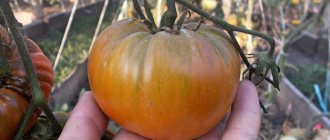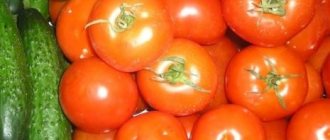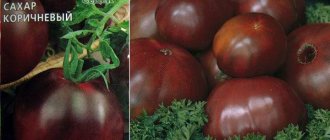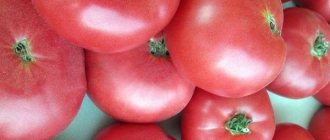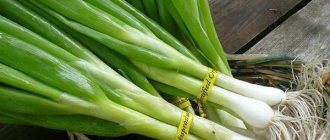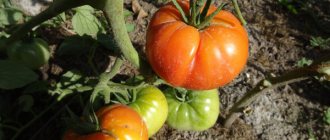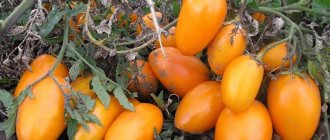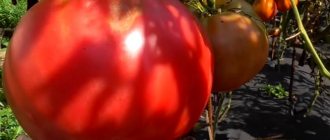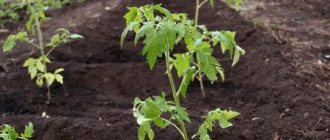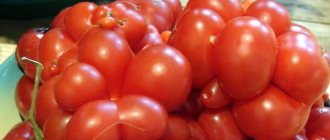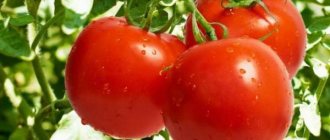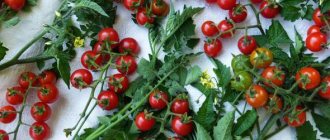White filling 241
Many summer residents admit their love for this variety. They note that past generations have planted it, and White Fill has never failed. It was recorded in the State Register of the Russian Federation back in 1966.
Tomatoes are harvested from it after 110-117 days. The bushes are stocky, in open ground they do not grow more than 50 cm. There is no need to remove the stepsons, but to speed up the ripening of the first batch of fruits, some gardeners remove the stepsons to the lower flower cluster.
Tomatoes look like apples; when unripe, they are light green; when fully ripe, they are orange-red. They weigh 70-120 grams, the taste is normal. The sourness characteristic of the variety is felt in the fruits. Suitable for all types of processing. Usually, tomatoes are harvested in a state of technical ripeness, and then ripened in boxes at home.
On a note! Prevention from late blight is required!
Otradny
Our whole family loved the unusual taste of these tomatoes, and, of course, we, the grandchildren, were the first to try them. Small, but tasty and bright fruits ripen quickly by mid-summer.
My grandmother usually planted “Otradny” in open ground and did not recommend placing it in a greenhouse. But she told me not to take my eyes off it: in the first couple of weeks, you need to quickly remove the fruits from the bushes so that they do not have time to deteriorate. Seedlings need to be picked when two leaves appear on the stem.
Siberian early ripening
Another “veteran” who is praised by summer residents of the Urals and Siberia. The variety “Siberian early ripening” justifies its name with the early and friendly yield of tomatoes. Developed specifically for regions with unfavorable weather conditions. In the State Register catalog since 1959. Main characteristics:
- unpretentious;
- frost-resistant;
- belongs to the group of determinate varieties of tomatoes;
- compact (45-50 cm in height), few leaves;
- early fruit ripening (90-100 days).
The tomatoes are tasty, bright red in color, weigh approximately 100-130 grams. The peculiarity of the fruit is its thin, often bursting skin. They are not suitable for pickling; they are used fresh, for sauces and pastes. Tomatoes are not shelf-stable, so after ripening, the fruits must be processed immediately.
Varieties for greenhouses
Using the classification of varieties, gardeners can make a choice of tomatoes. Each variety is adapted to the growing region and has good yield. The varieties below can be grown in polycarbonate greenhouses.
Grandma's Secret
The bush grows more than 2 meters in height. Used for growing in polycarbonate greenhouses or under film cover. The tomatoes are quite large and have a bright crimson color. Their flesh is very fleshy and the taste is sweet.
Please note: The vegetable is consumed both fresh and canned.
Summer resident
Bushes of this species have a height of about 60 cm; some gardeners can even grow them on a loggia. The bushes are resistant to cold and late blight. Tomatoes have a round shape and are predominantly bright red in color.
Application:
- Juice is prepared from tomatoes.
- Can be used in preparations for the winter.
The taste contains sourness. The fruits ripen simultaneously in whole clusters. The ripening period is medium-late. The pulp is juicy and quite tender. Tomatoes of this variety are not affected by fusarium. They have good transportability.
Eagle Heart
Tomatoes are shaped like a heart; the weight of the vegetable reaches about 800 grams. They have a late ripening period. Typically, one bush can grow up to 10 kg of tomatoes. Resistant to a number of common diseases.
It is well transported and has long-term storage.
Pink Abakan
The tomato has a late ripening period (usually 120 days). The bush needs to be shaped; a garter is often required. Tomatoes are pink in color and have tasty, juicy flesh.
With sufficient care, the weight of 1 fruit reaches 700-800 grams. Popular among gardeners.
Important It is permissible to grow in Siberian conditions.
Tomatoes of this variety are used in the preparation of salads, preparations for the winter and preparation of lecho.
Chio chio san
It belongs to the mid-late period of ripening, the bush sometimes reaches 2 meters. Needs support and bush formation. Grows well in conditions:
- Far East;
- Siberia.
It is resistant to major diseases. The taste is excellent.
Yablonka
Has an early ripening period. Several fruits ripen on the bushes at once. The weight of one tomato is about 100 grams. The taste is reminiscent of Chinese apples.
Stepsoning is not carried out for this species. It grows well both in a greenhouse and in a bed without shelter. With proper care, one bush can produce about 100 small fruits.
During preservation, the skin does not crack, which does not spoil the appearance of the product.
Ground Gribovsky
Tomatoes for open ground have proven themselves to be excellent among many generations of gardeners. It grows quickly, bears fruit abundantly, and yields are favorable. In terms of ripening time - early, after 95-100 days the tomatoes are ready for harvesting (technical ripeness stage). On small bushes 3-4 brushes are formed. The variety does not have high yields, but is stable in any season.
Tomatoes with standard characteristics:
- round, slightly flattened;
- the color of the skin and pulp is red;
- weigh approximately 70-90 grams;
- the taste is pleasant, sweet and sour.
3-3.5 kg are collected from one square meter. The main use is salads. Not suitable for canning or pickling.
Talalikhin 186
In 1952, a variety from Belarusian breeders appeared in the State Register of the USSR. The name is given in honor of the famous pilot V. Talalikhin. A tomato was created for all regions and successfully showed itself in Siberia and the Urals. A variety from the group of determinate tomatoes, low (40-60 cm), with beautiful corrugated leaves. 2-4 inflorescences are formed on the bush. There are not many tomatoes, but there is a harvest in any season.
The fruits are slightly ribbed and red when fully ripe. Weighing no more than 110 grams, but when forming a brush there can be specimens weighing 170-190 grams. The area around the stalk is darker, this will continue when the tomato ripens. Inside there are several chambers with a large number of seeds. The taste is pleasant, you can feel the sweetness and sourness characteristic of all early tomatoes. This does not spoil the taste of the fruit and gives it a piquant flavor.
The fruits are used in preparations, cut into salads, and fresh. Thanks to its juicy pulp, the Talalikhin variety is suitable for making juice, paste, and tomato sauces.
Moskvich
Today's gardeners will not be surprised by the variety of tomatoes. But in the 70-80s of the 20th century, the appearance of a low-growing and productive variety of tomatoes became a sensation. Moskvich is a tomato for cultivation on ridges or in small tunnels. Its height is 30-40 cm. The standard tomato is unpretentious, does not require pinching, and yields its harvest quickly and amicably.
On a note! Likes to grow in dense plantings. It is recommended to plant 7-9 bushes per square meter.
In the State Register - since 1976, grown throughout Russia and the CIS countries. The tomato has shown itself to be resistant to diseases and adverse factors. The tomatoes are small, 60-70 grams each, with a good pleasant taste. Productivity is 3.5-4 kg of fruit from one “square”.
Tomatoes are suitable for all types of processing:
- conservation;
- marinades;
- preparation of tomato products.
Amazing varieties of tomatoes of unusual shapes and sizes Gardeners grow not only traditional red tomatoes on their plots. Many people are experimenting by planting...
For open ground and greenhouses
There are many varieties of tomatoes, and making a choice can be very difficult. It is best to rely on your experience in growing. There are varieties that grow well both in greenhouses and in open ground.
Monomakh's hat
The tomatoes are quite large, weighing about 900 grams. The pulp has a sweet and sour taste. Medium-early type of fruiting (fruits appear 110-120 days after planting the seedlings).
Resistant to diseases. In the Northern regions it should be planted under cover, as it prefers a warm climate. In greenhouses, the yield reaches up to 20 kg per m2, in open ground up to 10 kg per bush.
Puzata Khata
The fruits have an unusual shape, somewhat reminiscent of small houses for gnomes, with enhanced ribbing.
Peculiarities:
- The average early ripening period is up to 100 days.
- They begin to turn red with sufficient heat and sunlight.
- The fruits have a sweet and sour taste, quite juicy with fleshy pulp.
The variety requires formation and garter; tomatoes ripen 2-3 pieces on one bunch. They require preventive measures against various diseases.
Golden Dome
The tomato has a mid-early ripening period. Productivity reaches up to 14 kg per bush. It has an orange color, a sweet and juicy taste.
Drop of honey
Tomatoes have a bright yellow hue, and sometimes even closer to orange. Several pieces ripen on the branches at once. This type of tomato contains a large amount of sugar. The weight of one tomato is about 30 grams. Tomato is grown in open ground and does not require much care.
Recommendation Particular attention should be paid to watering and applying mineral fertilizers.
The fruits appear in early September.
Bull's heart
It occupies a leading position in the popular vote ranking. The most popular type of tomato among gardeners. Has a late ripening period. The first fruits ripen 110-120 days after planting the seedlings. It is grown both in greenhouses and in open ground.
Productivity:
- When grown in a garden bed, you can harvest up to 5 kg from one bush.
- In greenhouse conditions, the yield increases to 12 kg.
The height reaches 1.5 meters. The tomatoes are heart-shaped and bright red in color. Large fruits are located near the ground, small ones at the top of the bush. The pulp is dense, the taste is uniquely sweet. This type of vegetable is a favorite among tomato gardeners.
When trying to grow a tomato, you can conclude whether it is suitable for growing on the site or not. For one gardener, this will be a favorite variety that is used annually, while another person, having planted it once, will not return to it again. You should not stop at the same types, you should try and find what suits you.
Alpatieva 905
The variety has been known since the 50s of the last century. Gardeners of old generations remember it as a productive and unpretentious tomato. The bushes grow just above 40 cm, with a large amount of leaf mass. There is no need to remove the shoots; only during the formation and ripening of the tomatoes it is necessary to tie the bushes to the stakes.
The fruits are bright red, look like small ruddy apples, tasty and slightly sour. Weight - 50-60 grams, inside - four chambers. Dry matter in fruits is 6%.
The Alpatieva variety is one of the tomatoes of the last century, widely used for industrial production. 3-4 clusters are formed on one plant, each containing 4 tomatoes. The yield is not as high as that of modern industrial hybrids, but the variety “takes” others:
- stability of fruit production in any season;
- amicable maturation;
- easy care.
Pollination by hand
At the same time, the yield depends not only on the seeds and climatic conditions, but also on how the pollination of future tomatoes will proceed. Recently, Tatyana has had to carry out this process manually using special means. The number of wild bees and wasps in the Sredneakhtuba region has decreased significantly, and this year, farmers admit, there are no winged workers at all. And they are needed. It is not profitable for the Filippovs to start their own hive. There simply aren't that many meadow grasses in the area. Therefore, you have to “tap”, as Tatyana calls the process of artificial pollination of tomatoes, on your own.
This is how artificial pollination of tomatoes occurs. Photo: AiF/ Nadezhda Kuzmina
“I take a special jar, breed a pollinator in it and start “tapping” each flower so that it all starts, otherwise it will burn off. Because the brushes are already high, and it’s very hot in the greenhouses,” says Tatyana Filippova. — I look for where the buds have blossomed and pollinate them. This is our variety - there will be yellow tomatoes.”
Pollination can only be done in the early morning, when the temperature is not yet very high. If it is already more than +25 in the greenhouse, you cannot “tap”, otherwise the entire ovary may simply burn.
Future cherry tomatoes. Photo: AiF/ Nadezhda Kuzmina
“Why did everything stop being born in our country? Because previously state farms had a very high rate of fertilizers. We ourselves worked on the state farm when we had it. Tomatoes were grown there for a reason. KamAZ trucks threw saltpeter and other fertilizers into the sprinkler, and in winter they also added mullein and poultry manure, which is why there were tomatoes,” says Tatyana Filippova about the peculiarities of growing vegetables in the main Soviet vegetable garden. “And now no one contributes anything, because people don’t have money.” They grow, one might say, on what they can grow with. And everything that is said (about excess chemicals - editor’s note) is a real lie.”
Verlioka F1
The hybrid is known to many summer residents. It has been grown for decades, noting the yield and early harvest of fruits. The tomato was included in the State Register in 1990; in terms of productivity, it is not much inferior to the hybrids of the new century.
“Verlioka” tomatoes are harvested after 100-106 days. It will please both beginners and experienced gardeners with productivity.
The plant is of a determinate type, spreading, with large dark green leaves. The inflorescences bear 8-10 fruits. The tomatoes are smooth, beautiful, weigh about 100-140 grams. Covered with a thin but dense skin, inside there is sugary pulp when broken. The color of the fruit is bright red.
With prolonged drought or waterlogging of the soil, the taste of the hybrid deteriorates. Tomatoes are suitable for all types of processing, including salads. This hybrid is little susceptible to disease and bears fruit even in summers that are unfavorable for tomatoes.
Betta
For almost two decades, gardeners have been pleased with this variety of tomatoes. It has many advantages:
- easy to care for;
- compact and short (35-45 cm);
- early in harvest (80 days);
- suitable for cultivation in all regions;
- grows well at home on a windowsill or balcony;
- productive (for its growth).
Small bushes produce smooth, red tomatoes weighing 50-70 grams. There is no need to pin the plant, but it is necessary to tie it up during the fruiting period. Under the mass of tomatoes, the bushes often fall on their sides.
The Betta variety is little susceptible to disease; it manages to “escape” late blight due to its early ripening. Tomatoes are suitable for pickling, but are usually used fresh in salads.
Tomato varieties popular among summer residents
Now let’s talk about the most popular and well-known varieties of tomatoes among summer residents.
The Persimmon tomato variety is one of the most popular varieties of yellow tomatoes.
Persimmons are not even yellow; tomatoes are a rich, bright orange color. The persimmon variety has been zoned since 1999 and today it remains the favorite variety of many summer residents. The fruits are fleshy, large and round in shape. The value of the variety is its high productivity, sweetness and increased beta-carotene content in the fruits.
Tomato Blagovest F1 is familiar to many gardeners.
Evenness of fruits, good yield when grown in greenhouses, good taste, height up to 1.5 m - these are the qualities that are valued in this hybrid.
Tomato Verlioka plus F1
This is a determinate, medium-sized (up to 1.5 m) hybrid for greenhouses. Early ripening. The period from germination to the beginning of ripening is 100 - 105 days. The fruits are round, smooth, red, weighing 80-90 g. Universal use and resistance to tobacco mosaic virus, cladosporiosis, fusarium give this variety the right to be so famous.
The Pink tomato and a whole series of Pink hybrids are also well known to gardeners.
These are tall tomatoes with pink fruits weighing from 115 to 250 g.
Tomato Octopus
The Octopus tomato or, as it is also called, the tomato tree, caused a lot of noise and controversy in its time. When buying this variety, you should know that the Octopus tomato is intended for the southern regions when grown in greenhouses. This hybrid has unlimited growth, long shoots and you will not be able to get large yields in standard greenhouses in the Central Region, and even more so, you will not be able to grow a huge tomato tree from this variety.
Peremoga 165
This variety was bred in Belarus and entered into the State Register catalog in 1951. Since then it has been grown everywhere. Many gardeners collect their seeds and plant this tomato year after year for decades.
Medium-sized bushes are covered with a large number of leaves. The variety is usually planted up to the first cluster, and is also done without pinching. The fruits are formed in clusters of 2-4 pieces, the main inflorescences are located on the main trunk.
Unripe tomatoes are light green with slight darkening in the stalk area. As it matures, the spot disappears and the color of the sweaty skin becomes red. They weigh approximately 90-130 grams. Inside there are from 4 to 9 chambers.
The fruits taste pleasant, without sourness. The main use is salad, processing, preparations.
